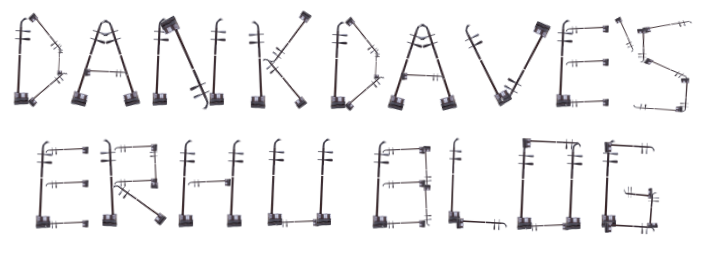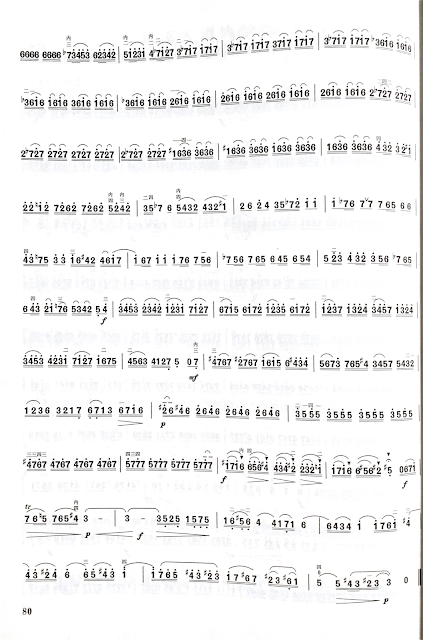There are many things concerning the sound quality of your erhu. Most likely, it is your setup and not your instrument. Generally, the only thing that is not due to the setup of your erhu is the fact that you bought a cheap erhu, most likely from eBay or Amazon. Decent erhus should be above $100 USD from a reputable seller. I made this checklist so that whenever you come up with a sound issue with your instrument, you can follow through the list I have here and hopeful fix a few things along the way, while at the same time, solve your problems in the process.
Section 1: The soundbox
1. Is the bridge directly in the center of the erhu?
2. If your erhu is octagonal, then the bridge can be placed slightly higher than the center of the erhu soundbox.
3. Look closely at the notches of the bridge of the erhu. Each notch has a different size depending on if the string is inner (thicker) or outer (thinner). Adjust appropriately.
4. Check how tight your erhu’s snakeskin is. Look at the snakeskin and see if it sags by looking on the side of the erhu. Snakeskin most often sags from the bridge’s pressure on the snakeskin. Looser snakeskin will sound louder and clear, average tightness snakeskin will sound decent, and tight snakeskin will sound thin and sharp. Tighter snakeskin will require some more bowing ability so that the sound will open up as it “breaks in”. If the snakeskin is loose or sagging, then you will need a higher bridge. If you have an erhu with tighter snakeskin, you will need a lower bridge.
5. How the bridge of the erhu is tilted does not matter. Generally, it should be straight, but some players tilt their bridges clockwise slightly, like huqin maestro, Mingyuan Liu, or counterclockwise slightly to stay in tune more by “locking” the A string.
6. Is there enough space in the grooves or notches of the bridge? Make sure there is enough space and the strings aren’t floating above the notches instead of going in them.
7. Is there too much space in the grooves or notches of the bridge? Make sure that the strings are fitted nice and snug, not too loose or tight.
8. Is there a cloth or sponge below the bridge of the erhu? Pull the material used below it and see if it stays in shape. If it does not stay in shape when you pull it, then it does not work and you should dispose of it, or use it as a cloth to clean your instrument. It should be thick enough so that when you push it between the strings and snakeskin, it requires some effort, but not too little effort. The purpose of the cloth to reduce unwanted noise when you are playing open strings and the high registers.
9. Is the snakeskin of the erhu dry? Dry snakeskin has the erhu’s tone crack more, and it looks or feels dry. Dry snakeskin is not shiny and is usually not smooth. If it is dry, moisturize it with extra virgin olive oil, and buffer it lightly, in the direction of the scales, using a cloth with less fibers. Try not to damage the scales of the snakeskin or leave hairs in it. Leave the oil to be absorbed after 18-24 hours and then wipe off the excess.
10. Are you using a mute? Using one will decrease the quality of the sound when you play using it. Try playing the erhu without it as much as you can... now that’s the true sound of your erhu! Also, make sure it fits on the bridge tightly with the hole in the bridge.
Section 2: The qianjin/nut
1. Is the qianjin tied with at least five loops around the strings of the erhu?
2. Is the qianjin tied around the neck at least once before and after it comes in contact with the strings?
3. Is it stable?
4. Did you tie it correctly (see qianjin blog post)
5. Is the space between the neck and strings of the erhu around the width of your thumb? Adjust it if it is too tight or loose.
6. Does it form an angle with the strings? The qianjin should pull the strings towards the neck.
7. Is the part of the qianjin in contact with the strings worn out? If so, you can turn the qianjin loop so that there is a new spot of the qianjin to touch the strings.
8. If you are not using something to tie the strings, and instead using some gadget, still check the criteria above.
9. If you are using some weird qianjin alternative, does it damage the strings? If so, change it. I used the blocky wooden ones with fine tuners in them, and they broke my outer string.
Section 3: Strings
1. Are your strings tuned to D4 on the inside string and to A4 on the outside string?
2. Is the inside string thicker than the outside string, and the outside string thinner than the inside string?
3. Are the metal loops at the end of your erhu strings fitted to the maximum lowest point where the two screws or pins are at the bottom of your erhu?
4. Are the strings looped around the tuning pegs of your erhu closely packed with each other, but not overlapping?
5. Is the inside string looped in a way that you turn the peg away from your body to tune it higher? In other words, is it looped clockwise (in perspective of looking at the peg ends facing you), and is the inside, thicker string facing towards you?
6. Is the outside string looped in a way that you turn the peg towards your body to tune to higher? In other words, is it looped counterclockwise, and is the outer, thinner string facing opposite from your body?
7. If a string touches the another string’s pegs, ignore it.
8. Are the strings fitted into the appropriate notches of the bridge of your erhu?
9. Are the strings at a slightly bent angle, starting from the bridge to the tuning pegs at the qianjin/nut of the erhu? It should be close to 180 degrees, but bent slightly towards the neck.
10. Are your strings looped around the tuning pegs as close to the ends as possible? (To form the slightly bent not 180 angle)
11. If you have small metal fine tuners on your strings above the qianjin, are they screwed in enough so that they do not fall off or vibrate when the erhu is being played?
12. Are the fine tuners of the erhu bending the strings at a dangerously large angle? (>90 degrees=very bad news)
13. Check if the strings in contact where the qianjin is are not crossing, overlapping, or twisted with each other.
14. Play the open strings of each string on your erhu, then suddenly stop playing the string and move the bow hair away from contact with the string. Listen to the sound as it rings and then gradually disappears. If the string makes a constant and unchanging tone, the string is still good. If the string does not have a constant sound and “bends” or changes, then the string is no good and it needs changing. Do this on both strings. You can use a tuner to check the pitch if it changes.
15. Are the strings sticky from rosin? If so, clean it up with an alcohol wipe or water.
16. Are the strings rusty? Is there residue when you rub the strings with a cloth? If so, the strings should be changed soon. See #14 to check the quality of the string.
17. If you are using a qianjin alternative, how much does it bend the strings? If it bends it a lot, then consider switching to a regular one.
Section 4: The bow
1. Are the bow hairs between the two strings?
2. Is the bow able to be nice and tight? When hanging from the outer strings of your erhu, it should be slightly bent or a 180 degree angle.
3. Is the bow hair getting loose by itself? If so, there’s no point in fixing it. You bought or have a crappy bow, change it.
4. Does the bow hair have enough rosin? 5-10 slow strokes on each side daily should be enough.
5. Does the bamboo part of the bow bend outwards? If so, it is too tight.
Section 5: Tuning pegs, neck, and head
1. Are the tuning pegs snug? If they are loose, then use chalk or accumulated rosin powder to help build up friction with the pegs.
2. If the head of your erhu broke off, do not use superglue. Have it fixed by any instrument or furniture repairs person. The head of the erhu does not affect the sound of the erhu.
3. Is the neck clean? Yeah I’m running out of ideas here.
If you still have problems or questions, you can comment them down below. Thanks for reading :D


























